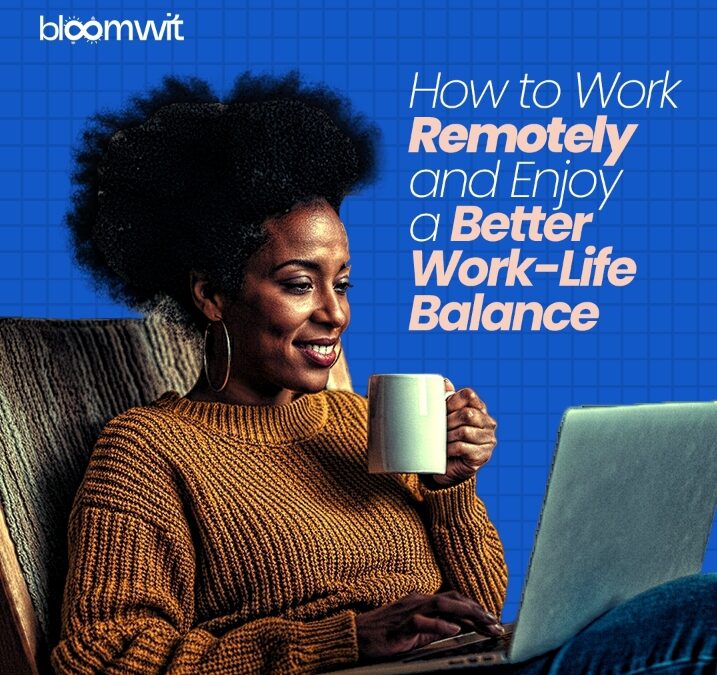In recent years, remote work has transitioned from a temporary solution to a permanent and even preferred work model for many. While it offers flexibility and autonomy, it also comes with unique challenges. Many people struggle to establish boundaries, leading to burnout or the feeling that they’re “always on.” However, with the right strategies, working remotely can offer a sustainable balance between professional and personal life. Here’s how to work remotely and enjoy a better work-life balance.
1. Set Clear Boundaries
When you work from home, it can be tempting to let work seep into your personal life, and vice versa. Establishing physical, mental, and digital boundaries between work and leisure time is essential. Start by designating a dedicated workspace if possible. This could be a home office, a desk in the corner, or even a certain spot at your dining table.
Equally important is setting mental boundaries. Communicate your work hours to family, friends, or roommates, and remind them when you’re “at work.” Similarly, let your colleagues know when you’ll be unavailable. Turn off work-related notifications after hours to signal a transition from work mode to personal time. By maintaining these boundaries, you’ll be able to work more efficiently without feeling like you’re constantly “on the clock.”
2. Prioritize a Structured Schedule
One of the biggest benefits of remote work is flexibility. But without a structured schedule, it’s easy to overextend yourself or work at odd hours. To maintain balance, try to create a daily routine that includes both work and breaks. Start work at a similar time each day, take regular breaks, and have a consistent end time.
Building in “buffer times” around your tasks can prevent back-to-back work without rest. Use scheduling tools to organize your day and help others know when you’re free or busy. Some remote workers find it helpful to end their workday with a ritual, like shutting down their laptop or changing into casual clothes. These small signals can be powerful in helping your brain recognize when the workday is over.
3. Focus on Your Health and Wellbeing
Remote work can make it easy to sit for extended periods, leading to physical and mental health issues over time. Prioritize your health by scheduling physical activity, whether that’s a quick walk around the neighborhood, stretching exercises, or a full workout. Taking small movement breaks during the day can boost your focus, productivity, and energy levels.
Just as importantly, pay attention to your mental wellbeing. Working in isolation can lead to feelings of loneliness or disconnect. To combat this, consider taking a break to chat with friends or family or engage in online communities with other remote workers. Regular social interaction, even in small doses, can have a significant positive impact on your mental health and help you feel connected to others.
4. Embrace Time Management Tools
Time management is key to achieving work-life balance when working remotely. Utilize tools that help you manage tasks, deadlines, and focus. Tools like Asana, Trello, or Microsoft Teams can help you organize your work and keep track of projects. Time-blocking techniques, like the Pomodoro method, can also be useful for maintaining focus and ensuring regular breaks.
If you’re easily distracted, tools that block certain websites or notifications can help. Experiment with a few different tools to see what fits best with your workflow. By managing your time efficiently, you’ll be able to accomplish more in less time, freeing up more personal time.
5. Take Advantage of Flexibility
The beauty of remote work is the flexibility it offers. Use this advantage wisely by scheduling breaks that allow you to take care of personal tasks or just unwind. Whether that means taking an afternoon walk, running an errand, or even meditating, flexible breaks can recharge your energy and improve productivity.
It’s also helpful to recognize when you work best. Some people are morning larks, while others are night owls. If you have the freedom to adjust your work hours, experiment with different schedules to see when you’re most productive. This will allow you to capitalize on your peak times for work and save lower-energy times for personal tasks or relaxation.
6. Regularly Assess Your Work-Life Balance
The nature of remote work can shift over time, and so can your needs. Periodically take stock of your work-life balance to see if you’re maintaining a healthy separation between work and personal life. Reflect on your energy levels, productivity, and sense of fulfillment. If you notice signs of burnout or dissatisfaction, don’t hesitate to make adjustments.
Consider speaking to your manager if you’re finding it hard to set boundaries or need more support. Many companies are increasingly understanding of remote workers’ needs and may offer flexibility or resources that help.
Remote work offers an incredible opportunity to balance professional and personal responsibilities. By setting boundaries, prioritizing health, using time-management tools, and being mindful of your own needs, you can create a sustainable remote work routine that enhances both productivity and personal well-being. Remember that enjoying remote work isn’t about blending your work and home life—it’s about balancing them.

